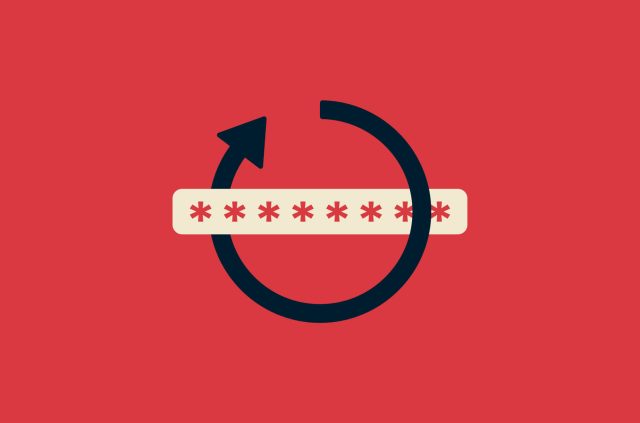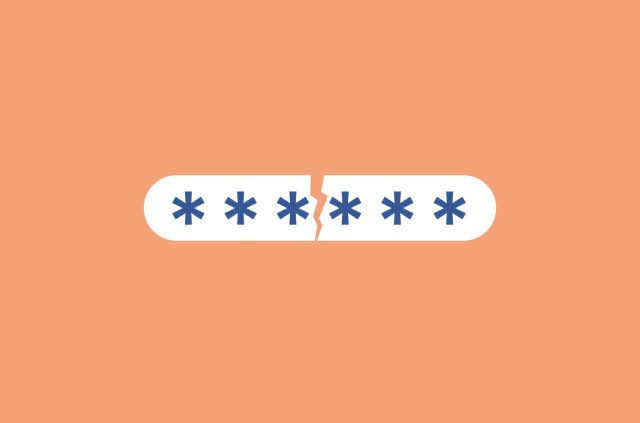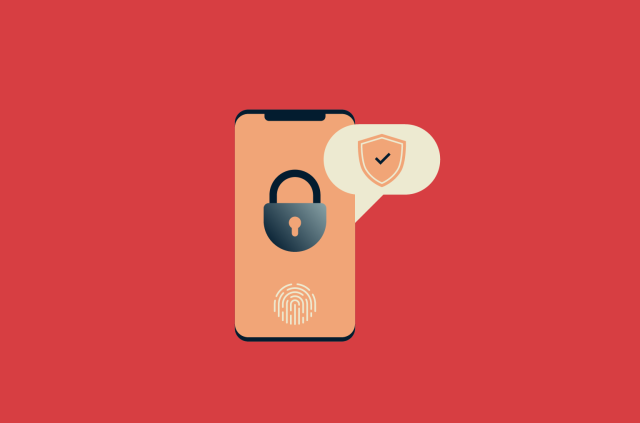Network security key: What it is and how to find it

Ever wonder if your Wi-Fi password alone can really keep intruders out? That short string of letters and numbers is more than just a login—it’s your network security key. In this guide, you’ll find out what a network security key is, why it’s the same as your Wi-Fi password, and how it safeguards your data from threats like snooping or malware.
You’ll also get practical steps on finding your key across different devices, fixing connection errors, and securing your network with measures like WPA3 encryption, VPNs, and MAC filtering. By the end, you’ll know exactly how to protect your home or office Wi-Fi from unauthorized access and enjoy a safer, more private online experience.
Want a secure Wi-Fi connection on every device you own? A VPN for network security can add an extra safety layer on top of your network security key. Consider ExpressVPN for advanced encryption, privacy features, and easy router integration. It’s a way to feel safer whether you’re browsing at home or connecting on the move.
What is a network security key?
Definition and purpose of a network security key
A network security key is the passcode that protects a Wi-Fi network from unauthorized access. This passcode is also often called a ‘wireless security key’ or ‘WPA key.’ You typically enter it when joining a network for the first time. The key has two major roles:
- It encrypts data moving between your device and the router.
- It confirms you’re allowed to connect.
Think of a network security key like a door lock. Only the right key (in this case, the correct Wi-Fi password) opens the door so you can use the network. Without the key, outsiders can’t read the data traveling through the Wi-Fi signal, which keeps your information more private.
Is a network security key the same as a Wi-Fi password?
Yes. These terms are interchangeable. Many router manufacturers call it a ‘Wi-Fi password,’ while others label it a ‘network security key’, ‘wireless password’, ‘WPA/WPA2 passphrase’, or ‘wireless encryption key’. No matter the label, all these terms refer to a code or passphrase needed to connect your device to a secured wireless network.
If your network didn’t require a passcode, anyone in range could connect. This leaves you at risk of data theft or eavesdropping. A strong network security key helps you lock out unwanted visitors and keep your connection more private.
Why is a network security key important for online security?
A network security key is a big part of router security because it:
- Prevents unauthorized use: If someone doesn’t have your correct network security key, they can’t hop onto your Wi-Fi. That stops them from hogging bandwidth, slowing down your connection, snooping through shared files or printers, or launching cyberattacks.
- Protects data: A network security key scrambles your information when it travels between your device and the router, using encryption protocols like WPA2 or WPA3. This makes it harder for eavesdroppers to capture details such as passwords, credit card numbers, or emails.
- Builds a foundation for advanced security: Your network security key is just one layer of protection. It works alongside tools like firewalls, MAC address filtering, and VPNs to strengthen your overall defenses.
- Helps maintain regulatory compliance: If you manage an enterprise network, a strong key supports data rules such as GDPR or HIPAA by keeping data handling safe. It also provides an audit trail of connected devices, which helps preserve operational integrity and accountability.
How does a network security key work?
Your network security key does more than just grant access to your Wi-Fi. It also secures your data by encrypting everything sent between your device and the router. Without encryption, your online activity—like passwords, messages, and banking details—could be intercepted by anyone nearby.
When you enter the correct key, your device and router establish a secure, encrypted connection. This prevents outsiders from eavesdropping on your internet traffic and ensures that only approved devices can use your network.
Here’s a closer look at how it protects your connection:
How does a network security key encrypt data?
A network security key encrypts data by transforming readable information into encoded ciphertext during transmission and only the authorized device can decode it. Your router and device use the same key to encode and decode data. So, when you enter the correct key, your device and router set up an encrypted tunnel to send information back and forth. If someone intercepts the data along the way, they’ll only see scrambled text, which they can’t decode without the correct key.
How does a network security key protect your Wi-Fi network?
The key works like a guard at the network’s entrance:
- Authentication: A device trying to connect must provide the key.
- Secure session setup: Once verified, an encrypted session starts.
- Protected transmission: Incoming and outgoing data remain readable only to devices using that same key.
By tying encryption to your password, your router makes it harder for cybercriminals to snoop on what you do online. This helps protect tasks like logging into accounts, sending emails, or banking online.
What happens if someone has your network security key?
If an outsider has your Wi-Fi password, they can join your network and:
- Monitor your traffic if they have special tools or knowledge.
- Use your bandwidth for heavy downloads or illegal activities.
- Attempt to snoop on file shares if your devices are set to share data over the local network.
- Launch cyberattacks or distribute malware.
It’s smart to regularly change your wireless security key if you suspect someone you don’t trust might have access to it.
What are the risks of a weak or compromised network security key?
Weak passwords (like ‘password123’) and known passcodes can create easy openings for attackers. The consequences often include:
- Data interceptions: Criminals can capture data you send online, including login credentials or personal details.
- Illegal activities from your IP address: If someone commits crimes using your network, investigators may eventually trace it back to you.
- Malware infections: Attackers might plant malicious software on your connected devices if they manage to access your network’s router settings.
Using strong keys goes a long way in preventing trouble down the road.
Read more: Guide to stronger passwords
Types of network security keys and their differences
Not all network security keys offer the same level of protection. Over the years, different encryption methods have been developed, with some becoming outdated and vulnerable to attacks. Choosing the right type of network security key helps ensure your Wi-Fi remains secure against intruders and data theft.
Here’s how the most common security protocols compare:
WEP (Wired Equivalent Privacy)—An outdated and vulnerable method
WEP was introduced in the late 1990s to protect Wi-Fi networks. It uses a static encryption system that is now considered unreliable. Attackers can break WEP encryption in minutes using widely available tools. Many older routers came with WEP as a default setting, but modern standards consider it unsafe.
If your router still uses WEP, consider moving to a more secure option. You’ll reduce the risk of unauthorized access and data snooping.
WPA & WPA2—The most commonly used security standards
WPA (Wi-Fi Protected Access) was created to replace WEP. It brought in dynamic encryption, meaning the key changes frequently. Yet, it still has weaknesses that advanced attackers might exploit.
WPA2 is an improved version of WPA. It uses AES-based encryption, which is far tougher to crack. Most home routers rely on WPA2 by default. It’s still widely considered safe for general use. WPA2 remains more secure than WEP or WPA.
WPA3—The next generation of network security
WPA3 is the newest standard. It builds on WPA2 by offering:
- Stronger encryption algorithms for enhanced Wi-Fi encryption.
- Forward secrecy so past data remains safe if a key is compromised in the future.
- Better protection against offline dictionary attacks by limiting how many incorrect password attempts can be made.
Routers certified after mid-2020 must support WPA3. Not all devices are compatible with WPA3 yet, but it’s generally the best option if you want a higher level of security.
What type of network security key should you use?
In most cases, WPA2 or WPA3 is the best choice. If your router supports WPA3 and your devices can handle it, set it up that way. If WPA3 isn’t available, WPA2 with AES encryption is an excellent fallback. WEP should be avoided unless you have very old hardware that cannot be updated.
How to find your network security key on different devices
Need to connect a new device to your Wi-Fi but can’t remember your network security key? Whether you’re using a router, computer, or mobile device, there are several ways to locate your Wi-Fi password. You can check the router label, access system settings on your device, or retrieve it from saved networks.
Here’s how to find your network security key on different devices:
How to find your network security key on a router/modem
- Look at the device label: Most routers have a label on the underside or back showing the default wireless network name (SSID) and the default password (network security key).
- Check the manual or box: The manual might list the default credentials if the label is missing or worn.
- Use router admin settings: Enter the router’s IP address in a browser (often 192.168.0.1 or 192.168.1.1), log in, and find the Wi-Fi password in the wireless settings menu. The exact location varies by model.
If you never changed the default key, the code from the label is likely what you’re still using. You can always change it by logging into the router’s admin panel and creating a new passcode.
How to find your network security key on Windows 10 and 11
- Click the Start button and choose Settings.
- Select Network & Internet on the left side. Scroll down to Advanced network settings.
- Choose More network adapter options.
- Right-click your active Wi-Fi connection and choose Status.
- Select Wireless Properties.
- Go to the Security tab and check Show characters. Your network security key appears in the box.
How to find your network security key on macOS
Method 1: Keychain access
- Open Spotlight (magnifying glass in the top-right or press Command + Space). Type Keychain Access and select it.
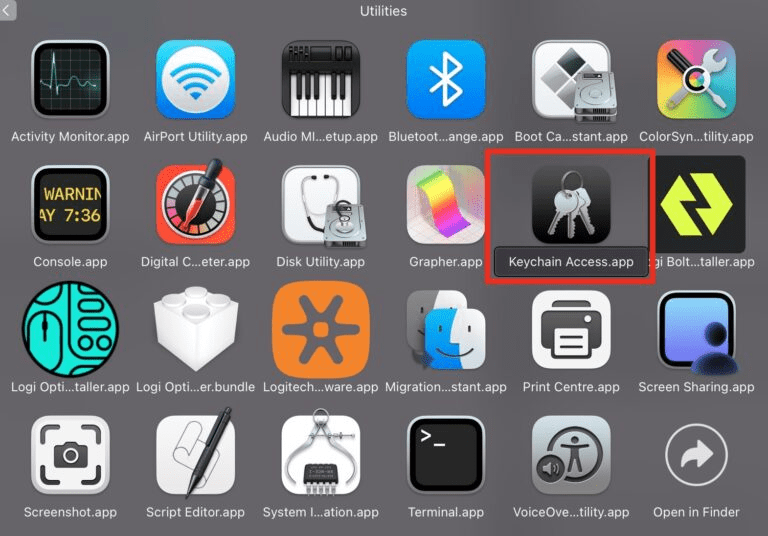
- Within Keychain Access, write the name of the Wi-Fi network you need the password for in the field at the top-right corner of the screen to search for it.

- Double-click the network and check Show password. Enter your Mac user credentials (password or Touch ID). You’ll see the key in plain text.

Method 2: System settings (macOS Ventura or later)
- Open the Apple menu and pick System Settings.

- Select Wi-Fi from the left panel and click Advanced.
- Look for the network you need, then click the three dots. Choose Copy Password.
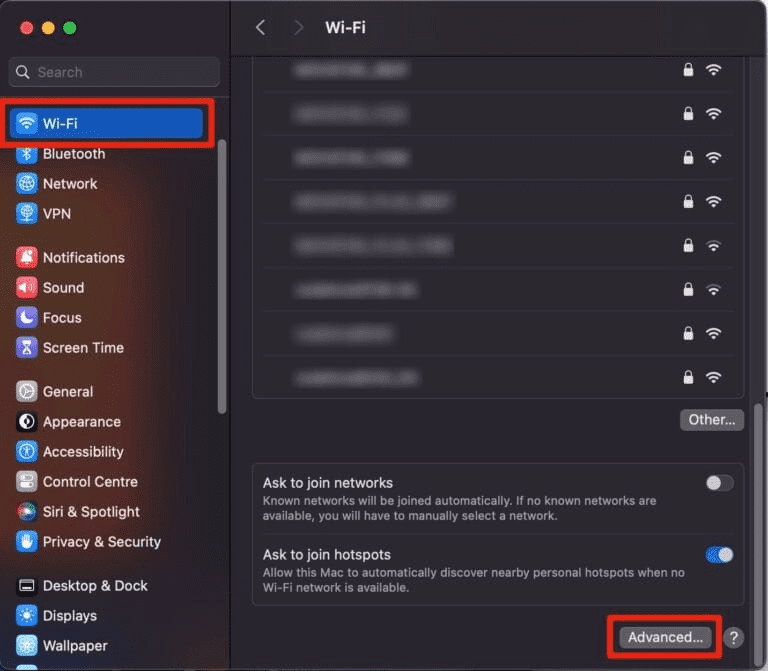
- Paste it in a secure spot.
How to find your network security key on Android devices
Modern Android versions don’t show the password in plain text, but you can share it via a QR code:
- Open Settings and pick Connections.
- Tap Wi-Fi and select the gear icon next to your network.
- Select the QR code option.
- Use another device to scan the code and connect automatically.
How to Find Your Network Security Key on iPhone/iOS
- Go to Settings and tap Wi-Fi.
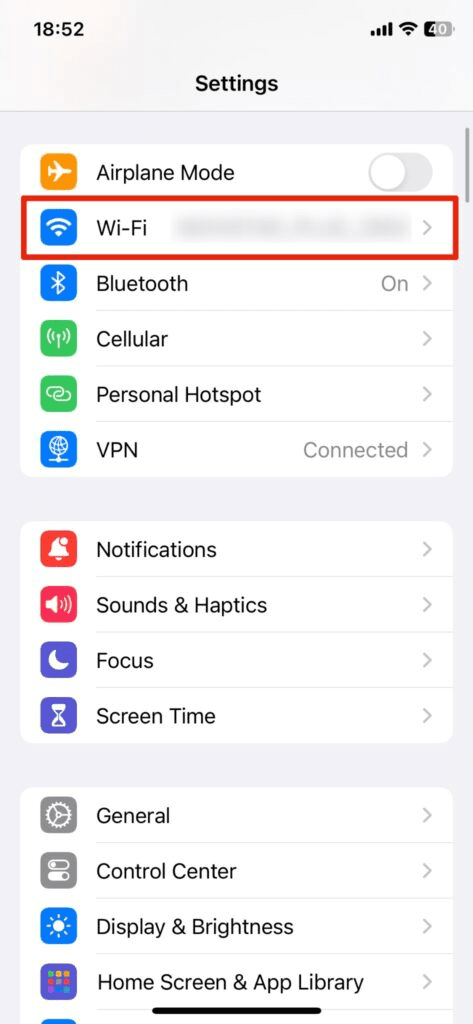
- Tap the ‘i’ icon next to your network.
![]()
- Tap the password field. Confirm with Face ID, Touch ID, or passcode to see the key in plain text.

How to find your network security key without internet access?
If you have no internet connection but you’re still connected to the Wi-Fi network, the steps on Windows and macOS work the same. Your device knows the password because it’s stored locally. If your computer is disconnected or you can’t log in for some reason, look at the router’s label or the router admin page (if you have Ethernet access).
Common security threats to your network security key
How do hackers steal network security keys?
Cybercriminals use various methods to grab Wi-Fi passwords. Some common tactics include:
Brute force attacks (how long does it take to crack a weak key?)
Brute force software tries many password guesses until it finds the right one. Simple or common passwords can be cracked very quickly—sometimes in seconds. Longer passphrases with symbols and numbers make brute force attempts more time-consuming, which usually discourages attackers.
Phishing attacks (fake wi-fi networks, evil twin attacks)
In phishing scenarios, criminals may set up a fake wireless network with a similar name to trick you into connecting. This is sometimes called an evil twin attack. You might see a network that looks nearly identical to yours or to a public hotspot you trust. Once you connect, they can ask you for personal information or attempt to push malicious software onto your device.
Packet sniffing (how hackers intercept unsecured connections)
Packet sniffing tools let attackers eavesdrop on data traveling over unsecured or poorly encrypted Wi-Fi. They capture network traffic, looking for unprotected login details or other valuable data. On networks using strong encryption (WPA2 or WPA3), it’s much harder for them to interpret what they capture.
Man-in-the-middle attacks (intercepting encrypted traffic)
A man-in-the-middle (MITM) attack happens when someone positions themselves between you and the router to intercept your data. Advanced attackers might use known vulnerabilities to manipulate traffic, even on encrypted networks. This is rarer but does happen, especially on networks running outdated firmware or older security protocols.
Can someone hack your network without knowing the security key?
The odds are low, but it’s never zero. If your router uses WEP or an outdated setup, criminals have a shot at breaking in. Some might guess or brute force a short password. Others exploit software glitches in older routers. Up-to-date hardware with WPA2 or WPA3, plus a strong key, makes unauthorized entry far less likely.
How to keep your network secure and prevent unauthorized access
Your network security key is the first layer of defense, but it’s not enough on its own. Cybercriminals use various tactics to steal passwords or bypass weak security settings. To keep your Wi-Fi safe, you need a combination of strong encryption, regular password updates, and extra security features like firewalls and MAC filtering.
Here’s how to strengthen your network and prevent unauthorized access:
How to create a strong network security key
A robust password is your first line of defense. Here’s how to set one up:
- Use at least 12 characters: Longer is harder to guess.
- Include numbers, letters (uppercase/lowercase), and symbols: This variety makes brute force attacks more difficult.
- Avoid dictionary words or personal info: Don’t use your name, birth date, or anything obvious to guess.
- Pick something random: Consider a passphrase or use a password generator.
How often should you change your network security key?
Some security experts suggest changing your Wi-Fi password every three months. Frequent changes help kick off devices that gained access without your approval. If you suspect someone untrusted has your password, you can change it immediately.
Best practices for storing your network security key
- Use a password manager: Tools like ExpressVPN’s Keys can store complex Wi-Fi passwords in an encrypted vault.
- Write it down in a safe place: If you prefer a physical copy, put it somewhere secure. Avoid leaving it on a sticky note near your router.
- Memorize if possible: A passphrase you can remember is often best. Just be sure it’s not too simple.
How to check who is connected to your network?
Access your router’s admin page and look for a ‘Connected Devices’ or ‘Attached Devices’ section. You’ll see a list of MAC addresses or device names. If you spot unknown ones, investigate or remove them by changing your password. Some routers let you block suspicious devices with a single click.
How to block unauthorized devices from your network?
Many routers provide these tools:
- Device blocking: In the same screen, listing connected devices, pick any unknown devices and block or remove them.
- MAC address filtering: Add the MAC addresses of trusted devices to an approved list. Others can’t join unless they’re on the list.
How to detect suspicious activity on your network?
Watch for these signals:
- Sudden slowdown: If your Wi-Fi speed drops without a clear reason, it might mean extra users on your network.
- Router admin log messages: Some routers track logins or repeat password attempts.
- Pop-up security alerts: Antivirus or firewall tools can flag unusual traffic.
If you suspect a breach, changing your Wi-Fi password and updating router firmware are two quick steps to re-secure your network.
Common network security key errors and how to fix them
What does ‘network security key mismatch’ mean?
A ‘network security key mismatch’ error indicates that the password you entered doesn’t match what the router is expecting. The cause might be incorrect password typing, an outdated device that doesn’t support the router’s encryption type, or a router glitch.
How to fix the ‘network security key mismatch’ error?
- Retype carefully: Be sure you got the uppercase, lowercase, numbers, and symbols right.
- Update drivers or OS: Some older devices can’t communicate with modern router protocols. Updating your operating system or Wi-Fi drivers might help.
- Reboot the router: Power cycling can fix random crashes.
- Use the correct SSID: Double-check that you’re selecting the right network name, not a neighbor’s.
What to do if your router doesn’t accept the network security key?
If the router denies your key despite it being correct:
- Confirm you’re typing the right one.
- Try logging into the router’s admin page (via Ethernet if necessary) and check the Wi-Fi password setting.
- Update your router’s firmware if an update is available.
- Factory-reset the router if nothing else works, though you’ll lose all custom settings.
Why does my device keep asking for the network security key?
This might happen if:
- The device isn’t storing the password properly, possibly due to a software glitch.
- The router is kicking out the device because it thinks the device is disconnected incorrectly.
- There’s interference from overlapping networks or ‘smart’ features that switch connections.
Deleting the saved network from your device, then reconnecting with the password, often solves the issue.
How to reset your network security key if you forget it?
- Access your router’s admin panel via browser.
- Look under Wireless or Wi-Fi settings for the current password.
- If you can’t log in, factory reset the router by pressing the reset button (usually a pinhole) for about 10 seconds.
- Once it restarts, use the default admin login and default wireless password from the router label or manual.
How to best protect your network security key
Why regularly updating your security key matters
Periodic password changes help remove devices that might have gained access in the past. If you shared your Wi-Fi password with friends or guests, they keep it until you change it. Over time, the number of people and devices that have your key may grow. A new key gives you control again.
Frequent updates also cut down on the chances that a brute-force attempt will succeed. If your password is changed before a hacker’s systematic guessing can crack it, that attack stalls out.
Additional security measures for maximum protection
Even with a strong network security key, there are still risks. Cybercriminals use advanced tactics to bypass passwords, exploit router vulnerabilities, or intercept data. That’s why it’s important to go beyond just setting a strong password. By enabling extra security features, you can better protect your Wi-Fi network from intrusions and potential threats. Here’s how:
- Router firmware updates: Install updates from your router’s manufacturer to fix bugs or vulnerabilities.
- Disable WPS (Wi-Fi Protected Setup): WPS can be convenient but sometimes has flaws that attackers exploit.
- Use a strong admin password: The password that secures your router’s control panel is different from your Wi-Fi password. Pick something strong there, too.
- Use two-factor authentication: Some modern routers let you apply two-factor authentication (2FA) to your admin login. This means you need an extra code (often sent to your phone) besides your password to make big changes. It’s useful to keep hackers out of your router’s configuration page, which helps stop them from changing your Wi-Fi password or DNS settings.
- Enable MAC filtering: MAC filtering is an extra way to decide which devices can connect to your Wi-Fi. Each device has a unique MAC (Media Access Control) address. By adding allowed addresses to the router’s settings, you’re limiting access to approved devices only. This can block an outsider even if they discover your password.
- Use a firewall: A firewall inspects data going in and out of your network. It can block suspicious traffic and limit possible infiltration. Routers often include a built-in firewall you can turn on. Using a software firewall on your devices adds another protective layer.
- Install a VPN on your router: A VPN helps with network security by encrypting all internet traffic from your device, even on public networks. If you set up ExpressVPN on your router, every connected device gains an extra encryption layer. This helps defend against packet sniffing, MITM attacks, and eavesdropping.
FAQ: About network security key
Why am I being asked for a network security key?
Can I use the same network security key on multiple devices?
How can I tell if my network security key has been hacked?
- Strange devices on your router’s connected list.
- A slowdown in connection speeds, especially when you’re not using the network heavily.
- Unexpected changes in your router’s settings or password.
- Frequent disconnection prompts or mismatch errors.
If you notice these red flags, change your password and check for firmware updates immediately.
Are there any tools for generating a secure network security key?
What is my network or hotspot’s network security key?
What should I do if my network security key is leaked?</p>
<p>
- Change your password right away.
- Check your router settings for unauthorized changes.
- Review your device list to remove unknown connections.
- Update firmware on your router to patch any known bugs.
- Run antivirus or antimalware scans on your devices in case attackers place malicious files on them.
What is the network security key for Wi-Fi?
What is a security key on a laptop?
Take the first step to protect yourself online. Try ExpressVPN risk-free.
Get ExpressVPN


